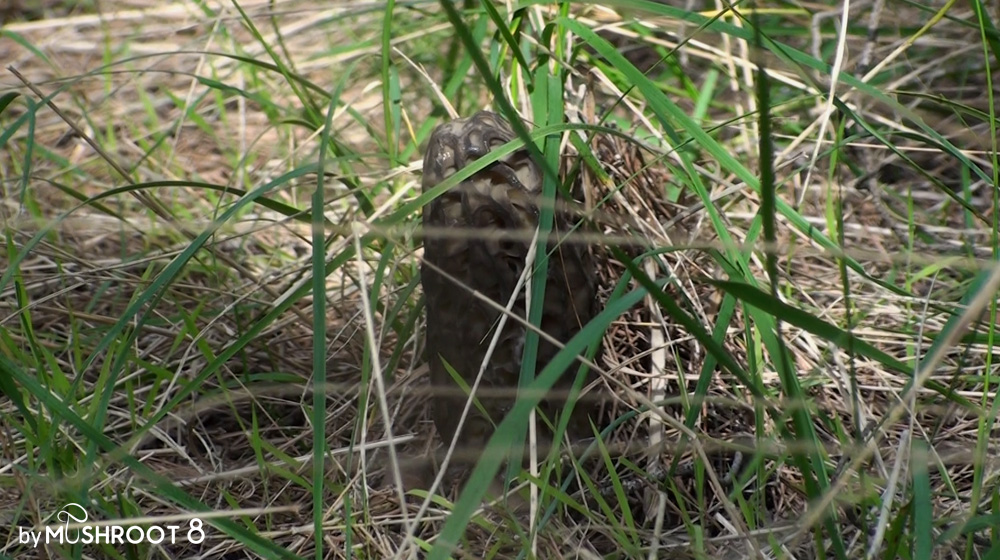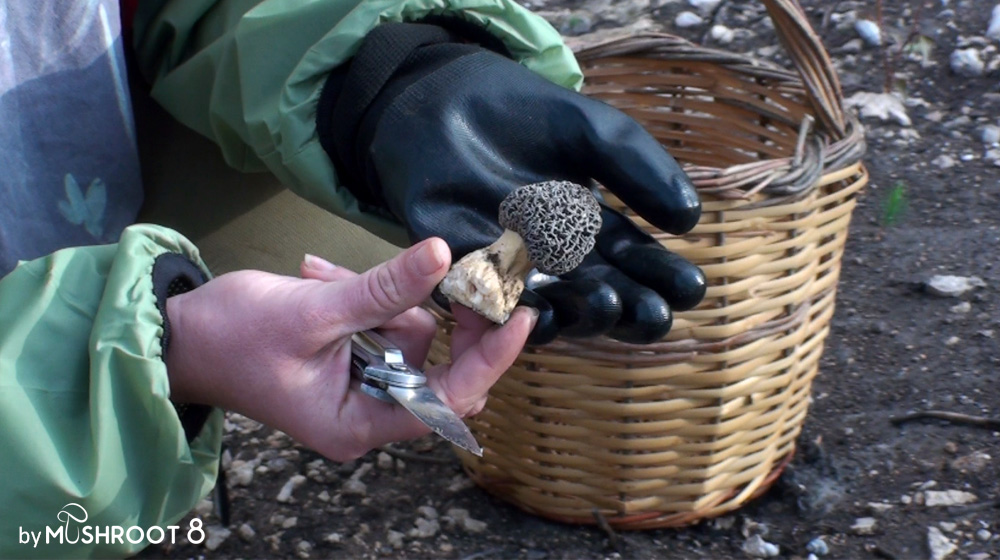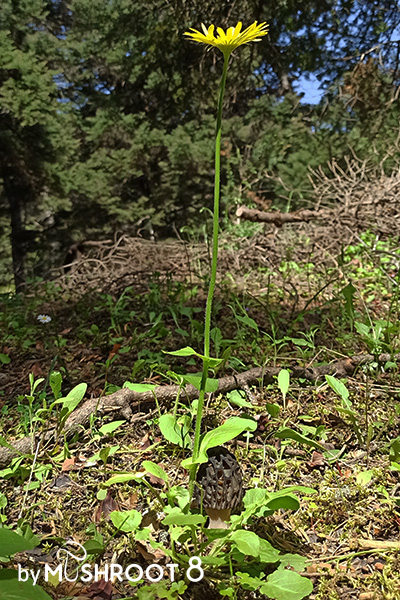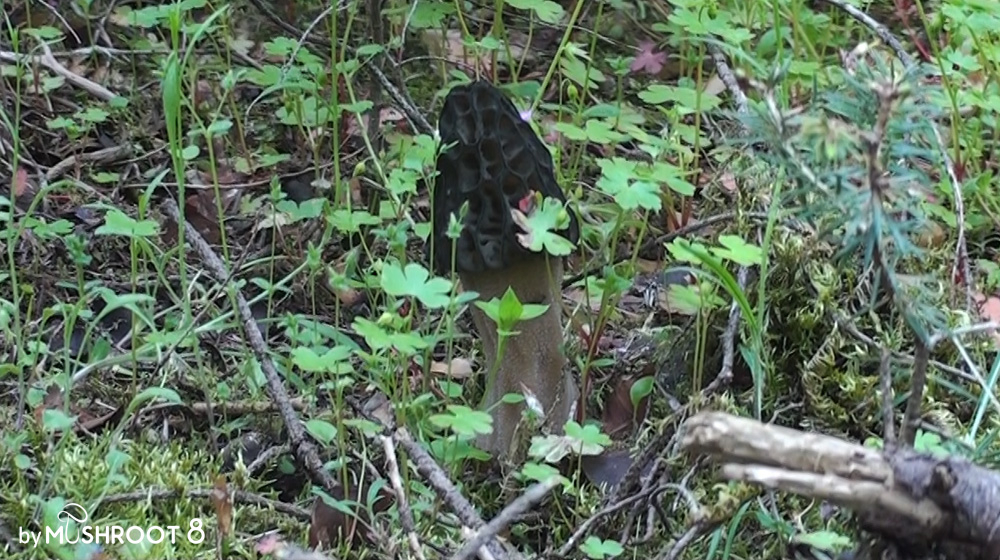| 1. The soil |
|
Soil is a very important element, if not the most important. Although morels are found in the most unlikely places, there are some conditions that increase the chances of encountering them. These have to do with humidity but mainly with temperature. The air temperature is intertwined with that of the soil. The warmer the air, the warmer the soil and that is what does the trick.
After a cold winter, an increase in soil temperature will mark the beginning of the season. The sooner this comes, the sooner we will have the first fruition, but if this happens abruptly the period will be quite short. On the other hand, if done gradually and at a slower rate, the first morels will be a little late, but will remain available for longer. Observe the weather, many meteorologists do this all the time for a living! |
|
2. Where should I go?
|
| If you are not easily oriented, morels are able to do that just fine. They often choose locations and slopes that face south. The sun is stronger on that side, as a result, the soil heats up faster, sprouts, turns green and the first morels emerge. If you are not on the mountains, look for places with more sun and less trees that provide shade and keep the soil cooler. |
| 3. Trees are talking to you. |
| Learn to recognize the trees. Although morels often behave unconventionally, they are particularly fond of certain trees. The trees that are high on their list are the elms, poplars, apple trees, followed by pines, firs, skulls, maples and oaks. Being able to recognize some of them will result in a more efficient morel hunt. |

| 4. No pain, no gain! |
| Morels can come out in the most unlikely places. But their preference remains a combination of soil and moisture, a form of mud that looks more like clay. It is not fluid and you should be able to shape it. Look for this mud, get dirty, try to "read" the soil, do not just stare at it. |
| 5. Light my fire! |
|
Some say morels sprout after a devastating fire to restart the forest. Others say that a burnt forest releases elements into the soil, which enhances fruiting and benefits the morels. Something similar to fires happens after logging. The soil has to feed fewer trees than one and has to push the smaller ones to make up for the damage, for this reason, the nutrients present in the soil increase. There again Morels appear to help the forest rejuvenate, but also to benefit herself.
Another disaster that seems to satisfy her are floods, the transport of various materials and substances and the "awakening" of the subsoil, enriches the soil and the morel will appear. Of course, it is important that the water has subsided because she does not like soaking in it.
|
 Morchella Exuberans on burnt pine forest
Morchella Exuberans on burnt pine forest
| 6. Singing in the rain |
| If the temperatures are high and everything looks dry, do not ignore a sudden rainfall especially a sudden heavy rain. After two or three days, you may be surprised by morels that started a crazy dance. If the conditions are good, the rain over the warm soil will make them appear. You should always be vigilant. |
| 7. The Notebook |
| When and where did you find them?, Under what conditions and how was the weather 5 days ago?, What about the trees, the temperatures and the other mushrooms that I found? why did I not take some notes? why didn't I photograph them? These questions should not be asked if you are an aspiring morel hunter. We keep record, we take photos and videos, we go back often and we consult them. It is common for reappearances in the same place, or under the same conditions, Do not want to miss the precious information given to you by previous crops. |

| 8. Stand by me |
| Morels are followers and usually have followers as well. A good sign that our loved ones are somewhere close, is when we meet another mushroom from the party. Some of these mushrooms are the Gyromitras and the Coronaries (“morel's traitor”, as some may call them) both of those species are not edible, but are very often close to them. Many times when the forest had disappointed me, one of these mushrooms urged me to continue and resulted in a positive outcome… |
| 9. Blink and you miss her |
|
The most difficult thing for morel hunters, especially beginners, is to locate them. They are in earth tones, they look like pine cones, often covered by vegetation, their shape does not resemble any other edible mushroom. How much harder can you make it?
A good solution is to command the brain to "lock" its image. Don’t look, SEE! Aaaa, and to do a pirouette here and there, the morel that we just passed and did not see from above, we may be able to see it from another angle. Slow and methodical steps with some scherzo is what you need. |
| 10. Secret my secret |
| Last but not least: If you could find people who know more than you do aboutMorelhunting, you should ask them politely, threaten them if necessary... you will always learn something. Let’s get serious! The biggest secret is the knowledge: read books, attend seminars, take part in mushrooms group excursions ... ... and if you have some morels locations, keep me posted. |
.




